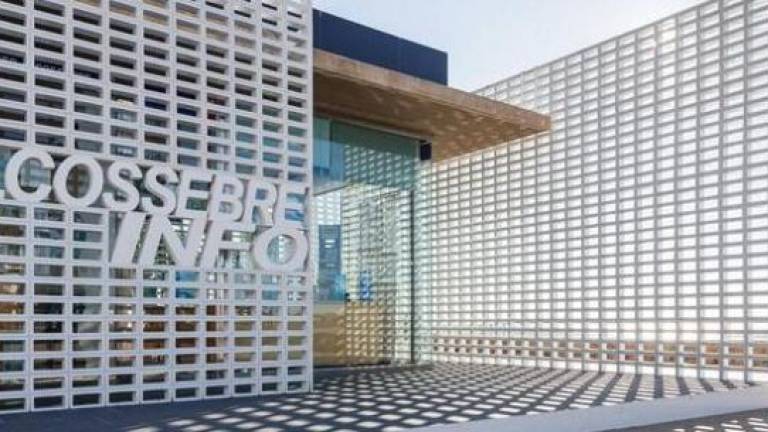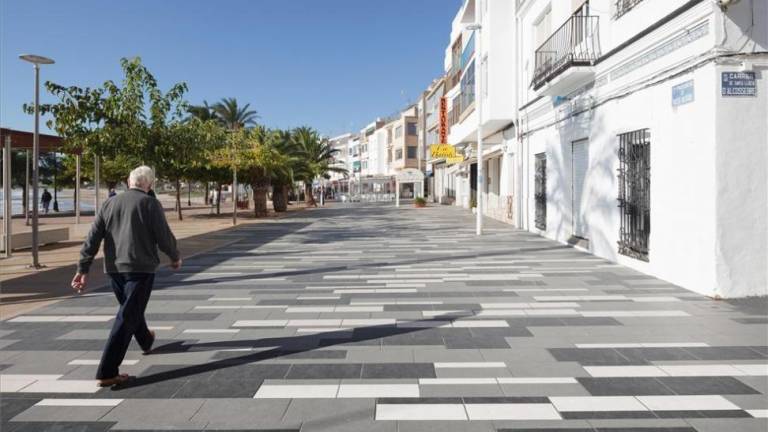Consulta cuando quieras la edición en Papel desde el lector de PDFs.
Pulsa aquí


Jaime Sanahuja y la remodelación del Paseo Vista Alegre de Alcossebre (Castellón) recibieron la semana pasada el premio al mejor proyecto en la novena edición de los Premios de Porcelanosa Grupo de Arquitectura e Interiorismo, dentro de la categoría Proyectos Realizados.
De los doce trabajos nominados en la modalidad de Proyectos Realizados, Sanahuja&Partners fue el estudio elegido como ganador. Este proyecto de arquitectura forma parte del Plan Estratégico de Diseño Turístico planteado por la Universidad Politécnica de Valencia, a través de un convenio con el Ayuntamiento de Alcossebre-Alcalà de Xivert. Para la realización de esta idea Sanahuja&Partners ha colaborado con los arquitectos Erik Herrera y Javier Poyatos.
El resultado es un diseño urbanístico basado en la utilización de materiales de calidad, que respeta completamente el entorno, integrándolo en la arquitectura local y generando un juego de luces y sombras que consigue provocar una experiencia visual y única.
OFICINA DE TURISMO // Inspirado en los edificios de costa de los años 60 y 70, la Oficina de Turismo que forma parte de este trabajo, es una construcción funcional integrada en un entorno de arquitectura mediterránea, en el que el blanco es el color predominante con el objetivo de potenciar la luz del mar y, además, mejora el confort térmico y lumínico.
El edificio está formado por una fachada ventilada que purifica el aire eliminando el NOx, un recubrimiento y tres muros semitransparentes de celosía cerámica. La empresa Cerámica a Mano Alzada es la proveedora de este material puramente autóctono que se ha utilizado como base de la construcción. Esta estructura le confiere entidad, mejora la habitabilidad y favorece la purificación del aire.
PASEO MARÍTIMO // Además de la construcción de la Oficina de Turismo, el proyecto cuenta con la remodelación del paseo marítimo, que incluye la peatonalización de vial y la eliminación de tráfico rodado, lo que completa una propuesta urbanística que se funde con la luz y el mar. Para ello, se ha recurrido al pavimento porcelánico técnico todo masa en acabado texture de la colección Avenue de Urbatek. Este material es un gres cerámico técnico sin esmaltes, de baja absorción y con grandes prestaciones cerámicas, idóneo para superficies de alto tránsito.
El objetivo fue apostar por el producto cerámico autóctono utilizando tres tipos muy distintos de cerámica, con distintos espesores, formatos, colores, acabados y usos. Los 1500 metros cuadrados de pavimento escogido ofrecen un diseño atemporal de apariencia pétrea con altas prestaciones técnicas que hace de intersección entre las construcciones y la arena de la playa. La combinación de franjas de colores Black, Grey y White confiere al paseo un tejido dinámico, contemporáneo y funcional.
MEDITERRANEAN FRESHNESS AT PASEO VISTA ALEGRE, ALCOSSEBRE // At this international contest edition of Architecture and Interior Design Porcelanosa Awards, the award has gone to Jaime Sanahuja, Juan Trilles, Erik Herrera y Javier Poyatos, from Sanahuja & Partners, the remodelling architects of Paseo Vista Alegre in Alcossebre (Castellón), together with its tourist office.
This project stands out because of its masterful representation of Mediterranean architecture and how wonderfully it plays with both the colour and the light. With a noticeable tribute to the indigenous, it manages to combine up to three different ceramic projects, including the technical full body porcelain from the PorcelanosaGrupo.
All quality and resistance on the Paseo Maritimo Vista Alegre. Due to the high transit along the Paseo Maritimo Vista Alegre in Alcossebre, its remodelling project had the pedestrianisation of the promenade, and the permanent removal of street traffic.
The Sanahuja&Partners studio relied on the firm, Urbatek, to install floor tiles on the seafront promenade, and in order to guarantee both elegance and ultra-resistance, the through-body porcelain tiles in its Avenue texture version were opted for. Additionally, it combines several porcelain formats: 30×60, 20×60 and 10×60 and colours as well such as Black, Grey and White. The matching of both its stony look and colour make it a timeless, elegant and technically perfect design, which undoubtedly acts as intersection between the maritime village and the sea.
Light dynamism at the Tourist Office. The second part of the 9th Porcelanosa Awards winning project includes the remodelling of the tourist office in Alcossebre. A building that had to connect with the promenade aesthetics, but without forgetting both the freshness and purity of the sea.
Inspired by the Mediterranean lattices of the 60s and 70s, Sanahuja & Partners opted for placing a glazed ceramic lattice in white that focuses on the originality of the architectural design. A lattice which also allows itself to go with the symbolism of light, expressed differently depending on the time of day. In addition, the lattice boosts the sight and lets the breeze come in, improving both lighting and the thermal comfort.
Moreover, this project banks on an additional ceramic piece that acts as a second skin on the facade. A ventilated façade that not only improves the habitability, but provides a purifying air treatment, removing NOx.
The project for the remodelling of the Paseo Vista Alegre in Alcossebre and its Tourist Office is part of a Strategic Plan for Tourism Design in partnership with the University of Valencia. Its goal: to promote tourism in the municipality, as well as focusing on the urban design in front of the sea.